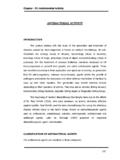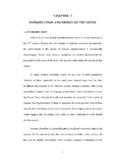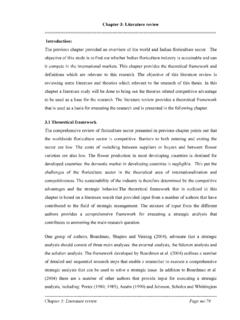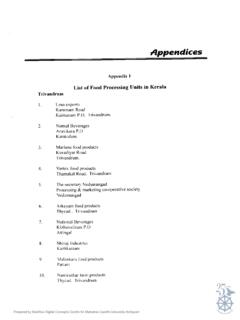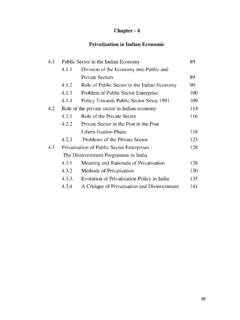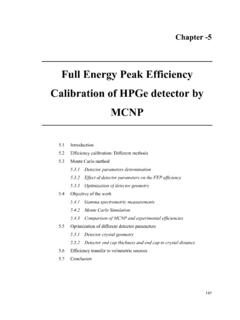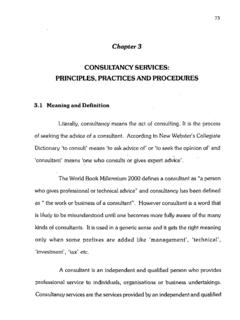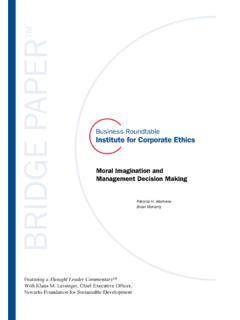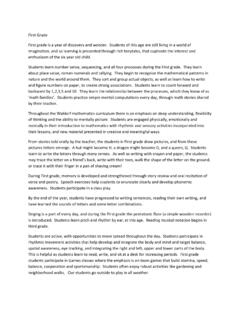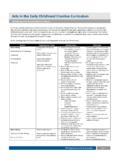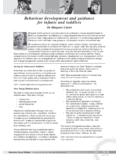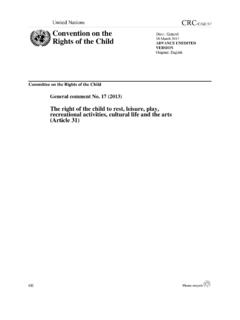Transcription of CHAPTER 3 THE CONCEPT OF QUALITY CIRCLE …
1 31 CHAPTER 3 THE CONCEPT OF QUALITY CIRCLE Introduction The previous CHAPTER presented the overview of literature on the research study. The aim of this CHAPTER is to understand the CONCEPT of QUALITY circles. It covers the meaning of QUALITY CIRCLE , definition of QUALITY CIRCLE , the essential elements and structure of QUALITY circles. Definition There have been different interpretations of the CONCEPT of QUALITY circles in various organizations in India and abroad. However, the most commonly accepted definitions in keeping with the essence of the philosophy as it originated in Japan are: QUALITY CIRCLE is a small group of employees in the same work-area or doing a similar type of work who voluntarily meet regularly for about an hour every week to identify, analyse and resolve work-related problems, leading to improvement in their total performance, and enrichment of their work life (Udupa 1986).
2 32 QUALITY circles are a formal, institutionalized mechanism for productive and participative problem-solving interaction among employees (Lozano & Thompson 1980). QUALITY control CIRCLE is not just a little room adjacent to the factory floor, whose occupants make a nuisance of themselves to everyone else. It is a state of mind and a matter of leadership with everyone from the president to production trainee involved (Rehder 1981). QUALITY CIRCLE is a small group to perform capital QUALITY control activities within the same workshop. This small group carries on continuously as a part of company wide QUALITY control activities self development and mutual development and improvement within the workshop, utilizing QUALITY control techniques with all member participating ( ).
3 Meaning of QUALITY CIRCLE In Japan, QUALITY circles are organized within a department or work area for the purpose of studying and eliminating production related problems. They are problem solving teams which use simple statistical methods to research and decide on solutions to workshop problems. 33 QUALITY circles in North America are similar to Japanese circles in spite in spite of the fact that each may emphasize a particular function such as problem solving, team building or QUALITY control. Underlying the QUALITY CIRCLE CONCEPT is the assumption that the causes of QUALITY or productivity problems are unknown to workers and to management.
4 It is also assumed that shop floor workers have hands on knowledge, are creative and can be trained to use this natural creativity in job problem solving. QUALITY circles, however, are a people building, rather than a people using, approach. Features of QUALITY Circles The main features of QUALITY CIRCLE are: (a) QUALITY CIRCLE is a small group of employees QUALITY CIRCLE is a small group of employee of 8 to 10. A CIRCLE with less than 5 members would lose its vitality due to high rate of absenteeism. This may cause a CIRCLE to become inactive. On the other hand, more than 15 members in a CIRCLE could result in denial of opportunity for active participation by every one.
5 As 34such, 8 to 10 are recommended as the minimum and maximum strength of QUALITY circles respectively. The reason for such numbers is that number of interaction among members would be manageable. (b) QUALITY CIRCLE is organized in the same work area or doing similar type of work A QUALITY CIRCLE is a homogeneous group and not an inter-departmental or inter-disciplinary one. Members participating in CIRCLE activities must be on the same wave-length. Discussions taking place at the meetings should be intelligible to each one of the members. This is possible only if the composition of the CIRCLE includes employees working in the same work area or engaged in a similar type of work.
6 Designations of members need not necessarily be equal but the work in which they all are engaged should be common. For example, in any assembly area, turner, drillers, electricians, and unskilled workers, etc., could decide to form a CIRCLE . Similarly, circles could be composed of stenographers in an office, operators on a group of milling machines, nurses in hospitals, draughts men in an engineering section, clerks in a bank s. etc. 35(c) QUALITY circles are voluntary Employees decide to join QUALITY circles on their own willingness. No compulsion, coercion or pressure can be brought on any employee to join or not to join QUALITY circles.
7 This is based on voluntarism principle. (d) QUALITY circles meet regularly for about an hour every week Normally, a QUALITY CIRCLE meets for about an hour every week. It is therefore possible for the CIRCLE to meet atleast three or four times a month. The regularity of such meetings is very significant and it must be adhered to. These meetings could be conducted during or after working hours. This decision is left to QUALITY CIRCLE members themselves. For example the Bharath Heavy Electric Ltd., Bangalore, have been conducting the meetings for an hour after the shift hours on every Saturdays (QCFI Convention Report 2008).
8 (e) QUALITY circles identifies, analyses and resolves work-related problems The employees who work continuously in a work area knows best what problems are hindering achievement 36of high QUALITY , productivity and optimum performance as also how they can be remedied. The members of QUALITY circles themselves can, therefore, identify problems and entertain requests from the management and other departments to look into certain problems that may be worrying them. The focus of QUALITY circles is work related problems and not other extraneous issues such as grievances or demands. For Example in a non ferrous foundry in BHEL, Hyderabad, one of the problems identified by a QUALITY CIRCLE was on an unhealthy, smoke polluted environment (QCFI Convention Report 2008).
9 Any unenlightened management might construe this problem as a grievance. But managerial maturity would also recognize that productivity and QUALITY of work would be affected by such unclean environmental conditions. In this instance, the problem which had been repeatedly highlighted but had defied a solution for many years in the past was resolved by the QUALITY CIRCLE members who analysed the problem systematically, found a solution and got it implemented with the cooperation of everyone in just six months. 37 (f) QUALITY CIRCLE leads to total performance As QUALITY circles resolve work related problems relating to QUALITY , productivity, cost reduction, safety etc.
10 The total performance of the work area naturally improves. This results in both tangible and intangible gains to the whole organization. Empirical data provided in CHAPTER 5 would substantiate this feature of QUALITY CIRCLE . (g) QUALITY CIRCLE enrich work life The spin off benefits of QUALITY circles of the organization includes enrichment of the work life of their employees apart from attitudinal changes, cohesive team culture, etc. Improved working environment, happier relations with co-employees, greater job satisfaction etc. are responsible for this enrichment of their work life. Assumptions of QUALITY Circles The CONCEPT and philosophy of QUALITY circles are derived from the following basic assumptions (Mathew George 1991): 38 1.
